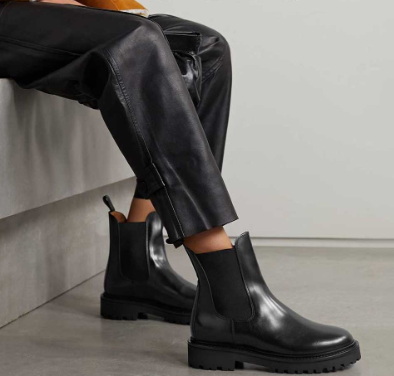Content Menu
● Understanding Shoe Sizes: Men vs. Women
>> Are Women's Shoe Sizes Different from Men's?
>> Why Do These Differences Exist?
● Factors Influencing Women's Shoe Sizes
● Average Women's Shoe Size Around the World
● Converting Between Men's and Women's Shoe Sizes
● Can Women Wear Men's Shoes and Vice Versa?
● Challenges in Women's Shoe Sizing
● Tips for Buying Shoes for Women
● Conclusion
● Frequently Asked Questions (FAQ)
>> 1. Do women's shoe sizes run smaller than men's?
>> 2. Why are women's shoes narrower than men's?
>> 3. Can I wear men's shoes if I am a woman?
>> 4. Why do my shoe sizes vary between brands?
>> 5. Do women's shoe sizes change over time?
● Citations:
Shoe size is a fundamental aspect of footwear, yet it often leads to confusion, especially when comparing men's and women's shoes. This article explores whether women wear different size shoes, the reasons behind size differences, how shoe sizing works across genders, and factors that influence women's shoe sizes. We will also discuss practical tips for buying shoes and understanding size conversions, concluding with FAQs to clarify common queries.

Understanding Shoe Sizes: Men vs. Women
Are Women's Shoe Sizes Different from Men's?
Yes, women's shoe sizes are generally different from men's, not only in number but also in shape and width. Although shoe sizes might appear similar numerically, the actual fit and dimensions vary significantly between men's and women's shoes.
- Size Scale Differences: Women's shoe sizes typically run smaller than men's by about 1 to 1.5 sizes. For example, a women's size 8 usually corresponds to a men's size 6.5 or 7, depending on the sizing system[1][3][5].
- Width Differences: Men's shoes tend to be wider, designed to accommodate broader feet, while women's shoes are narrower, especially at the heel and forefoot[1][3][11].
- Shape and Fit: The shoe last (the mold used to shape the shoe) differs; men's lasts are wider and more angular, and women's lasts are narrower with more arch definition to fit the typical female foot shape[3].
Why Do These Differences Exist?
The differences stem from anatomical variations and historical manufacturing practices. Men generally have wider and larger feet, so shoes are designed accordingly. Women's shoes emphasize a narrower fit and often incorporate different styles, such as higher heels and open designs, which also influence sizing and shape[1][3].
Factors Influencing Women's Shoe Sizes
Women's shoe sizes can vary due to several factors beyond gender-based design:
- Age: Feet tend to grow longer and wider with age, especially after events like pregnancy and menopause[2].
- Weight: Increased body weight can cause feet to spread, affecting shoe size and width[2][10].
- Genetics: Genetic factors influence foot size and shape, just as they do other physical traits[2].
- Lifestyle: Active lifestyles or prolonged standing can alter foot shape and size over time[10].
Average Women's Shoe Size Around the World
Shoe sizes vary globally due to genetic and environmental factors:
- The global average women's shoe size ranges from 7 to 9 (US sizing)[4][10].
- In the US, the average is approximately 8.5 to 9.
- UK average sizes for women are around 6.5 to 7.
- Asian countries tend to have smaller average sizes; for example, Japanese women average around size 5.5 US[4][10].
Converting Between Men's and Women's Shoe Sizes
Understanding how to convert sizes is essential when buying shoes across gender categories or unisex styles:
| Men's US Size | Women's US Size Approximate Equivalent |
| 5 | 6.5 |
| 6 | 7.5 |
| 7 | 8.5 |
| 8 | 9.5 |
| 9 | 10.5 |
| 10 | 11.5 |
This 1.5 size difference is a general rule, but some brands like Adidas use a 1 size difference, so checking brand-specific charts is recommended[1][3][11][15].

Can Women Wear Men's Shoes and Vice Versa?
Yes, women can wear men's shoes and men can wear women's shoes if the size is converted correctly. However, the fit may differ due to width and shape differences. For example, a woman with wider feet might find men's shoes more comfortable, while a man with narrow feet might prefer women's shoes[1][3].
Challenges in Women's Shoe Sizing
- Vanity Sizing: Some women's shoe brands use "vanity sizing," where the labeled size is smaller than the actual shoe size to appeal to customers, leading to confusion[7].
- Inconsistent Sizing Across Brands: Shoe sizes are not standardized; a size 7 in one brand may fit like a size 8 in another[7].
- Changing Foot Size: Women's feet can change size due to pregnancy, aging, or weight fluctuations, making it important to reassess shoe size periodically[2][7].
Tips for Buying Shoes for Women
- Measure Feet Regularly: Get your feet measured, especially if you notice discomfort or changes in foot shape.
- Try Shoes On: Always try shoes on, preferably at the end of the day when feet are largest.
- Consider Width and Shape: Focus on fit, not just length. Width and arch support are crucial for comfort.
- Use Size Conversion Charts: When buying men's or unisex shoes, convert sizes properly.
- Adjust for Different Sized Feet: Many people have slightly different sizes for each foot; consider adjustable shoes or custom options if needed[9].
Conclusion
Women do wear different size shoes compared to men, not only in number but also in width, shape, and style. These differences reflect anatomical variations and historical design standards. Shoe sizes for women are influenced by genetics, age, weight, and lifestyle, and average sizes vary worldwide. Understanding size conversions and fit differences is essential for comfortable footwear, especially when considering men's or unisex shoes. Because shoe sizing is not standardized across brands, women should measure their feet regularly and try on shoes to ensure the best fit.

Frequently Asked Questions (FAQ)
1. Do women's shoe sizes run smaller than men's?
Yes, women's shoe sizes are typically about 1 to 1.5 sizes smaller than men's for the same foot length. For example, a women's size 8 corresponds roughly to a men's 6.5 or 7[1][3][11].
2. Why are women's shoes narrower than men's?
Women's shoes are designed narrower at the heel and forefoot to accommodate the generally slimmer shape of women's feet, while men's shoes are wider to fit broader feet[1][3].
3. Can I wear men's shoes if I am a woman?
Yes, many women wear men's shoes, especially if they have wider feet. You just need to convert the size properly (usually subtract 1.5 sizes) and consider the width and shape differences[1][3].
4. Why do my shoe sizes vary between brands?
Shoe sizing is not standardized across brands. Some brands use vanity sizing, and others have different lasts and fits, causing your size to vary between brands and shoe types[7].
5. Do women's shoe sizes change over time?
Yes, women's feet can grow longer and wider due to aging, pregnancy, weight changes, and lifestyle factors. It's advisable to measure feet regularly and update shoe sizes accordingly[2][7].
Citations:
[1] https://www.chums.co.uk/blog/is-there-a-difference-between-mens-and-womens-shoes
[2] https://www.somexc.com/blogs/news/what-is-the-average-womens-shoe-size
[3] https://www.pavers.co.uk/blogs/are-mens-and-womens-shoe-sizes-the-same
[4] https://runrepeat.com/womens-shoe-statistics
[5] https://kizik.com/blogs/news/shoe-size-101
[6] https://www.youtube.com/watch?v=DIeA7FErxB4
[7] https://www.youtube.com/watch?v=81A8xO9VoOI
[8] https://www.youtube.com/watch?v=nkjXYkie9Lw
[9] https://adelanteshoes.com/blogs/news/is-it-normal-to-have-feet-with-two-different-sizes
[10] https://alefiaworld.com/blogs/journal/average-shoe-size-for-women
[11] https://runrepeat.com/guides/differences-mens-womens-running-shoes
[12] https://www.youtube.com/watch?v=taJ8FmO6X50
[13] https://www.reddit.com/r/malefashionadvice/comments/8lhg4m/why_we_wear_different_sizes_in_different_shoes/
[14] https://www.youtube.com/watch?v=A3-D4qYFaKs
[15] https://www.youtube.com/watch?v=STOgiT9yktc
[16] https://www.youtube.com/watch?v=2dlGzobJLzU
[17] https://www.reddit.com/r/NoStupidQuestions/comments/1efmzzg/why_do_women_and_mens_shoe_sizes_have_to_be/
[18] https://support.newbalance.com/s/article/NBUS-How-to-Convert-Your-Women-s-Shoe-Size-to-a-Men-s-Shoe-Size
[19] https://harpersbazaar.com.au/am-i-wearing-the-wrong-shoe-size/
[20] https://en.wikipedia.org/wiki/Shoe_size
[21] https://www.healthline.com/health/average-shoe-size-for-women
[22] https://www.reddit.com/r/explainlikeimfive/comments/6ays6q/eli5_why_do_men_and_women_need_different_shoe/
[23] https://www.clarks.com/en-us/blog/editorial/how-to-tell-if-your-shoes-are-the-right-size
[24] https://thefitville.uk/pages/faqs-what-is-the-average-shoe-size-for-a-woman
[25] https://mallet.com/blogs/news/are-mens-shoe-sizes-the-same-as-womens
[26] https://kizik.com/blogs/news/average-shoe-size-for-women
[27] https://nicksboots.com/blog/post/whats-the-difference-between-mens-and-womens-sizing/
[28] https://nypost.com/2023/12/12/health/heres-what-determines-the-size-of-our-feet-and-how-we-can-influence-it/
[29] https://www.tiktok.com/@mathewssonya/video/7430430679365651745
[30] https://www.tiktok.com/@fayxol/video/7482061937711303942
[31] https://www.tiktok.com/@theonlymaleek/video/7488750075452132625
[32] https://www.youtube.com/watch?v=bsOUAsVOLfA
[33] https://www.tiktok.com/@mrescom1/video/7413680226699382021
[34] https://www.tiktok.com/discover/women-shoe-size-comparison
[35] https://www.youtube.com/watch?v=4OAj0CKbtrQ
[36] https://www.tiktok.com/discover/how-to-know-difference-between-men-and-women-shoes
[37] https://www.tiktok.com/@runnersworldmag/video/7288688037335223595
[38] https://www.tiktok.com/@disorganized.religion/video/7294277360621276459
[39] https://www.tiktok.com/@gingermeohwee/video/7340039539127225642
[40] https://www.youtube.com/watch?v=5F1NuqYM6sU

















